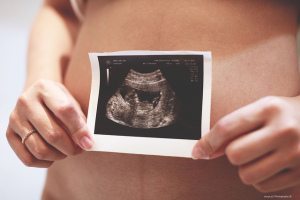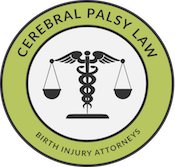Michigan Hypoxic Ischemic Encephalopathy (HIE) and Nuchal Cord Lawyers
Because the umbilical cord is responsible for transporting important nutrients, blood, and oxygen to the baby, any interference to its function is highly dangerous. Umbilical cord complications commonly cause traumatic birth injuries such as hypoxic ischemic encephalopathy (HIE; birth asphyxia; neonatal encephalopathy), infant brain damage, and cerebral palsy (CP). Throughout this article, our Michigan hypoxic ischemic encephalopathy (HIE) and nuchal cord lawyers will briefly explain how knots in the umbilical cord can cause infant oxygen deprivation and birth injuries.
At Michigan Cerebral Palsy Attorneys, our award-winning birth trauma lawyers have the knowledge and expertise necessary to win cases related to hypoxic ischemic encephalopathy (HIE) and nuchal cords. Known for taking cases other law firms turn down, our HIE and nuchal cord lawyers have helped numerous families secure compensation for their medical malpractice and birth injury cases.
If you or a loved one suffer from permanent injuries or disabilities from a birth-related incident, we encourage you to call our Michigan hypoxic ischemic encephalopathy (HIE) and nuchal cord lawyers today. Our birth injury attorneys will provide you with a free case review. Should we take your case, no fee will be incurred until we win or settle. Call Michigan Cerebral Palsy Attorneys toll-free at (888) 592-1857, fill out this online contact form, or press the following button:
Hypoxic Ischemic Encephalopathy (HIE) and Nuchal Cords
What Is a Nuchal Cord?
Nuchal cords are pregnancy complications that occur when the umbilical cord wraps around the fetus’s neck. Nuchal cords are classified in two categories—type A nuchal cords wrap in loops that can come undone, while type B nuchal cords wrap into “true knots” that cannot be undone. Occurring in roughly 15% to 34% of pregnancies, nuchal cords are common—but dangerous—pregnancy, labor, and delivery complications.
What Is Hypoxic Ischemic Encephalopathy (HIE)?
Hypoxic ischemic encephalopathy is a neonatal brain injury that results from fetal oxygen and blood deprivation around the time of labor and delivery. Other terms for hypoxic ischemic encephalopathy (HIE) include neonatal encephalopathy (NE), birth asphyxia, and intrapartum asphyxia. Hypoxic ischemic encephalopathy results from hypoxia (decreased oxygen flow to the baby) and ischemia (decreased blood flow to the baby). HIE often results in serious, permanent injuries and disabilities including periventricular leukomalacia (PVL), cerebral palsy (CP), neurodevelopmental disabilities, cognitive impairments, seizure disorders, and more.
How Do Nuchal Cords Cause Birth Asphyxia and Birth Injuries?
The umbilical cord consists of one vein and two arteries—the vein carries oxygenated blood to the baby, and the arteries transport the depleted, de-oxygenated blood from the baby back to the placenta. When nuchal cords form, two dangerous conditions may occur—hypoxia (diminished oxygen flow to the baby) and ischemia (diminished blood flow to the baby). Nuchal cords may cause birth asphyxia because they often result in umbilical cord compression and cord vessel compression, venous blood flow congestion, and decreased blood flow in the baby’s neck artery.
Restricted fetal growth, umbilical cord compression, umbilical cord prolapse, fetal death, meconium stained amniotic fluid, neurodevelopmental disabilities, heart rate abnormalities, decreased fetal movement, and complicated deliveries are also associated with nuchal cords. However, complications and injuries do not always occur when nuchal cords are present.
What Causes a Nuchal Cord?
Nuchal cords may form in a number of different situations. Below, we’ve listed a few known risk factors and causes for nuchal cords:
- Long umbilical cord length
- Fetal movement
- The fetus is large for his or her gestational age
- Moniamniotic twins (twins sharing one amniotic sac)
- Multiple gestations (twins, triplets, etc.)
- Abnormal neonatal presentation during birth (such as breech presentation, face presentation, or shoulder presentation)
- Nutritional deficits may affect the umbilical cord’s function, structure, or protective coating
- Polyhydramnios (excessive amniotic fluid)
Signs, Symptoms, and Diagnosis of a Nuchal Cord
 Nuchal cords are most commonly detected by signs of decreased fetal activity late in a pregnancy (usually around the 37th week of gestation). If a nuchal cord forms or becomes present during labor and delivery, fetal heart tracings will identify irregular fetal heart rate.
Nuchal cords are most commonly detected by signs of decreased fetal activity late in a pregnancy (usually around the 37th week of gestation). If a nuchal cord forms or becomes present during labor and delivery, fetal heart tracings will identify irregular fetal heart rate.
In order to diagnose a nuchal cord during a routine obstetrical ultrasound, medical professionals inspect the fetus’s neck from different angles. Studies show that gray scale ultrasounds may detect nuchal cords roughly 70% of the time, while color Doppler ultrasounds may detect nuchal cords roughly 83% to 97% of the time.
Treatment for Nuchal Cords
Treating and Managing Nuchal Cords to Prevent Hypoxic Ischemic Encephalopathy
When nuchal cords are present, medical professionals must handle labor and delivery with great care. The failure to properly control and treat an infant or mother within standards of care is negligent, and medical negligence that results in an injury is medical malpractice. Medical professionals are chiefly required to avoid compression of the umbilical cord during delivery—various techniques to help preserve the umbilical cord function include the somersault technique (where the baby is born in a somersault position), moving the cord over the baby’s shoulders, or moving the cord over the baby’s head. For more severe nuchal cords, the umbilical cord must be cut and clamped before the baby is delivered—this practice ensures adequate oxygen supply to the baby. In cases of prolonged and dangerous vaginal delivery, medical professionals must quickly order and perform an emergency C-section operation.
Michigan Lawyers Handling Cases Related to Hypoxic Ischemic Encephalopathy (HIE) and Nuchal Cords
 Our legal and medical professionals understand how complicated and overwhelming a birth injury diagnosis can feel—with over 50 years of combined experience helping families like yours, our lawyers know how to answer your questions and win your case. If you think your loved one has permanent injuries from medical mistakes surrounding hypoxic ischemic encephalopathy (HIE) and nuchal cords, please reach out for legal advice today. Our Michigan birth injury lawyers will provide you with a free legal consultation and inform you of your legal options. Take the first step towards a better future for your family and contact our Michigan hypoxic ischemic encephalopathy (HIE) and nuchal cord lawyers today:
Our legal and medical professionals understand how complicated and overwhelming a birth injury diagnosis can feel—with over 50 years of combined experience helping families like yours, our lawyers know how to answer your questions and win your case. If you think your loved one has permanent injuries from medical mistakes surrounding hypoxic ischemic encephalopathy (HIE) and nuchal cords, please reach out for legal advice today. Our Michigan birth injury lawyers will provide you with a free legal consultation and inform you of your legal options. Take the first step towards a better future for your family and contact our Michigan hypoxic ischemic encephalopathy (HIE) and nuchal cord lawyers today:
Call us toll-free at (888) 592-1857
Complete this online contact form
Related Resources
- Info on Hypoxic Ischemic Encephalopathy (HIE)
- Infographic: Hypoxic Ischemic Encephalopathy (HIE)
- Hypoxic Ischemic Encephalopathy (HIE) and Neonatal Seizures
- Hypoxic Ischemic Encephalopathy (HIE) and Uterine Rupture
- Treating HIE with Hypothermia Treatment
- Info on Nuchal Cords
- Tips: Choosing a Michigan HIE Lawyer
- Verdicts and Settlements: Our Past HIE, Nuchal Cord, and Birth Injury Cases
- Hypoxic Ischemic Encephalopathy (HIE) in Twins and Multiples
- Hypoxic Ischemic Encephalopathy (HIE) from the Misuse of Pitocin & Cytotec
Informational Sources:
- Jauniaux, E., Ramsay, B., Peellaerts, C., & Scholler, Y. (2008). Perinatal features of pregnancies complicated by nuchal cord. American journal of perinatology, 12(04), 255-258.
- Collins JH. Nuchal cord type A and type B. Am J Obstet Gynecol 1997; 177:94.
- Verdel MJ, Exalto N. Tight nuchal coiling of the umbilical cord causing fetal death. J Clin Ultrasound 1994; 22:64.
- Nelson KB, Grether JK. Potentially asphyxiating conditions and spastic cerebral palsy in infants of normal birth weight. Am J Obstet Gynecol 1998; 179:507.
- Zahoor, Farnaz, Zakia Minhas, and Adil Zaki. “PERINATAL OUTCOME OF NUCHAL CORD.” Journal of Postgraduate Medical Institute (Peshawar-Pakistan) 27.2 (2013).
- Dhar KK, Ray SN, Dhall GI. Significance of nuchal cord. J Indian Med Assoc 1995; 93:451.
